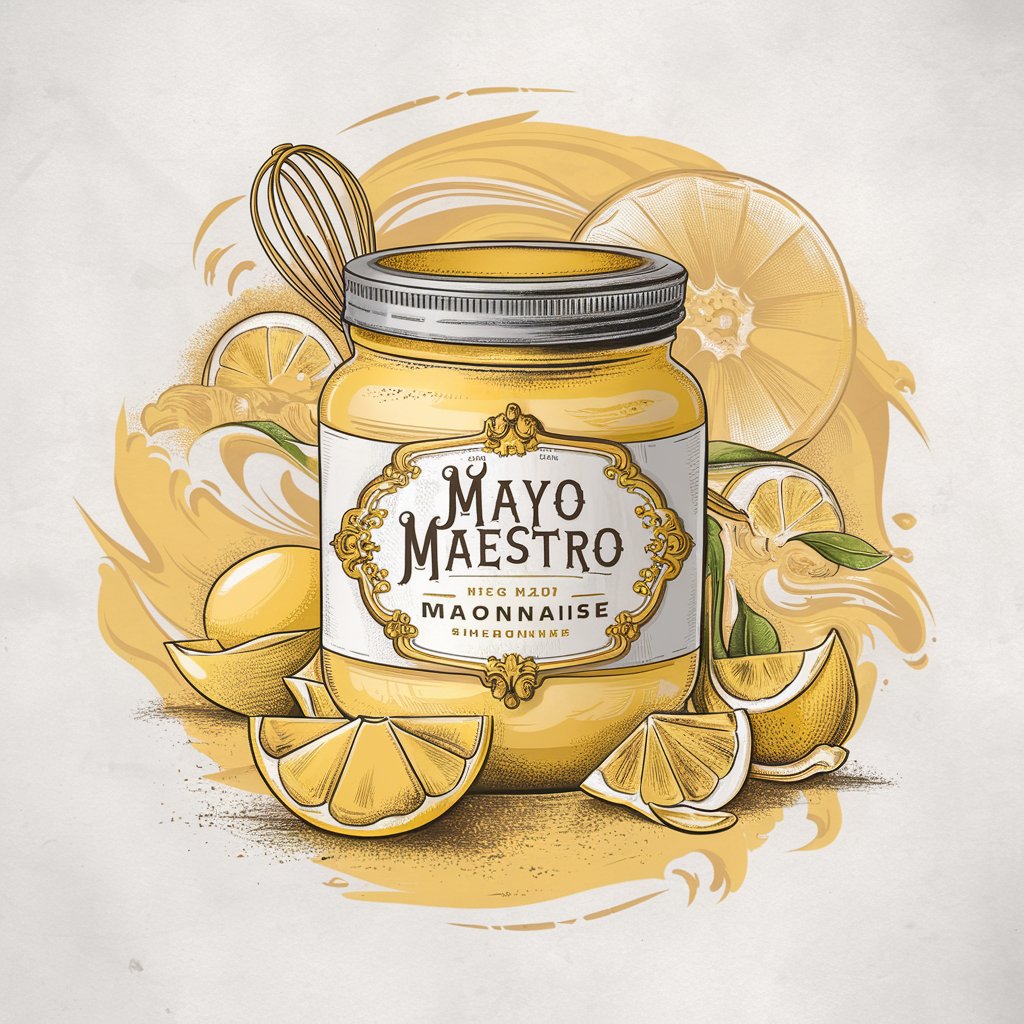
Hot Sauce - Hot Sauce Exploration

Welcome to Hot Sauce GPT! Ready to spice up your culinary journey?
Spice up your meals with AI
Can you recommend a hot sauce that pairs well with seafood?
What's the best way to incorporate hot sauce into a marinade?
Tell me about the different flavor profiles of various hot sauces.
How can I make my own hot sauce at home?
Get Embed Code
Introduction to Hot Sauce
Hot Sauce is a specialized digital assistant designed to provide in-depth information and insights into the world of hot sauces. Its primary purpose is to educate and guide users on the vast variety of hot sauces available globally, their unique flavor profiles, heat levels, ingredients, and culinary applications. Through engaging discussions, Hot Sauce helps enthusiasts and cooks explore new ways to incorporate hot sauces into their cooking, enhancing flavors and experimenting with international cuisines. Examples of its functionality include offering recommendations on hot sauce pairings for different dishes, explaining the origins and history of specific hot sauces, and providing advice on creating custom hot sauce blends for personalized taste preferences. Scenarios illustrating its use might involve a home cook seeking to elevate a simple meal with a complementary hot sauce or a culinary professional exploring artisan hot sauces to introduce in a gourmet recipe. Powered by ChatGPT-4o。

Main Functions of Hot Sauce
Culinary Recommendations
Example
Suggesting a smoky chipotle hot sauce to add depth to barbecue sauces or to enhance the flavor of grilled meats.
Scenario
A user planning a barbecue party seeks advice on how to incorporate hot sauce into their recipes for a unique twist.
Educational Insights
Example
Explaining the fermentation process of traditional Tabasco sauce or detailing the difference between Mexican habanero and Thai bird's eye chili sauces.
Scenario
A user curious about the making of hot sauces and their global variations desires to deepen their understanding of hot sauce production.
Pairing Suggestions
Example
Recommending a fruity habanero sauce to pair with tropical fruit salads or seafood dishes to balance sweetness and heat.
Scenario
A home chef is experimenting with fruit-based dishes and seeks a hot sauce recommendation that complements the sweet and tangy flavors without overpowering them.
Heat Level Guidance
Example
Advising on the Scoville scale ratings of different hot sauces to help users choose the right level of spiciness for their dishes.
Scenario
A user new to hot sauces wants to understand the heat levels to make informed choices that suit their spice tolerance.
Ideal Users of Hot Sauce Services
Culinary Enthusiasts
Individuals passionate about cooking and exploring diverse flavors, who are eager to learn how different types of hot sauce can enhance their recipes and culinary creations. They benefit from Hot Sauce's recommendations and educational insights, enabling them to experiment confidently with new ingredients.
Hot Sauce Collectors
People who collect and savor hot sauces from around the world, interested in the history, production methods, and unique flavor profiles of various sauces. They appreciate Hot Sauce's in-depth information on rare and artisan hot sauces, helping them to expand their collection and knowledge.
Professional Chefs and Restaurateurs
Culinary professionals seeking to innovate and introduce distinctive hot sauce flavors into their menus. Hot Sauce offers them specialized pairing suggestions and creative culinary applications, enhancing their dishes' appeal and diversity.

Using Hot Sauce: A Guide
1
Start your journey into the world of hot sauces with a hassle-free experience by visiting yeschat.ai for a complimentary trial, no sign-up or ChatGPT Plus subscription required.
2
Identify your flavor preference and heat tolerance. Hot sauces come in a wide range of flavors and spice levels, from mild to extremely hot. Start with a milder sauce if you're new to spicy foods.
3
Experiment with different cuisines. Hot sauce can enhance the flavor of various dishes, from Mexican tacos to Thai curries. Use it as a condiment, marinade, or cooking ingredient to add depth and heat.
4
Adjust the quantity based on your taste. Begin with a few drops and gradually increase the amount to suit your spice preference. This helps in understanding your tolerance level without overwhelming the dish.
5
Explore and record your experiences. Keep a hot sauce journal to note down the flavors, spice levels, and the dishes they pair well with. This will guide your future selections and culinary experiments.
Try other advanced and practical GPTs
Traductor a Español
Bridging Languages with AI Precision

Developing Quality Technical Documentation
Streamlining Technical Documentation with AI

Romance Novel World Builder
Craft Immersive Romance Worlds with AI

LDA - Proposal Writer v5
AI-powered, personalized proposal crafting

Manager
Empowering Leadership with AI Insights

Viral Video Assistant
Elevate Your Videos with AI-Powered Insights

Vinnige ingenieur
Elevate Your Output with AI

Lopes Scholar
Empowering Literature with AI

growth marketing
Accelerating business growth with AI-driven insights

CleanResearcher
Empowering research with AI precision.

IT用語シンプル変換
Demystifying tech, one term at a time.

Business Mentor
Empowering your business journey with AI

Hot Sauce FAQs
What makes a hot sauce unique compared to other condiments?
Hot sauce stands out due to its ability to add both heat and a complex array of flavors to dishes. It's made from chili peppers, which contain capsaicin, a component that provides its distinctive spiciness. Additionally, hot sauces often include ingredients like vinegar, garlic, and herbs, offering a wide variety of tastes beyond just heat.
Can hot sauce go bad, and how should it be stored?
Yes, hot sauce can go bad, but it has a relatively long shelf life due to its acidic content. It's best stored in a cool, dark place before opening and refrigerated after opening. If the color, smell, or taste significantly changes, it's time to discard it.
How can I incorporate hot sauce into my cooking?
Hot sauce can be used in numerous ways in cooking. It's great as a marinade for meats, a spicy addition to sauces and soups, or even mixed into dressings for salads. It adds a layer of flavor and heat that can elevate the overall taste of a dish.
Is hot sauce healthy?
In moderation, hot sauce can be a healthy addition to your diet. Capsaicin, the compound that gives chili peppers their heat, has been linked to various health benefits, including improved metabolism and pain relief. However, some sauces may contain high levels of sodium, so it's important to consume them in moderation.
Are there any cuisines that particularly favor the use of hot sauce?
Hot sauce is incredibly versatile and used worldwide, but cuisines from Latin America, the Caribbean, Africa, and parts of Asia particularly favor its use. Each region has its own unique type of hot sauce that reflects its culinary traditions and available ingredients.





